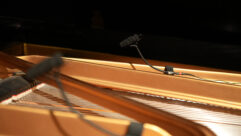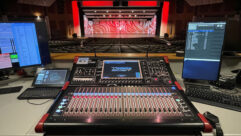Photo above: An exterior view of the 2,200-seat Margot and Bill Winspear Opera House at Dallas’ AT&T Performing Arts Center (pc: Kathy Tran)
The nonprofit AT&T Performing Arts Center in Dallas will observe its 15th anniversary next year and the five performance venues on its campus—the 2,200-seat Margot and Bill Winspear Opera House, the 547-capacity Dee and Charles Wyly Theatre, the outdoor performance space, Annette Strauss Square, whose lawn can hold up to 2,200, and two highly-utilized black box theater spaces—have geared up to celebrate with a brand new sound system and an array of DiGiCo products that will greatly enhance the sonic capabilities of all five venues in the $360 million facility.
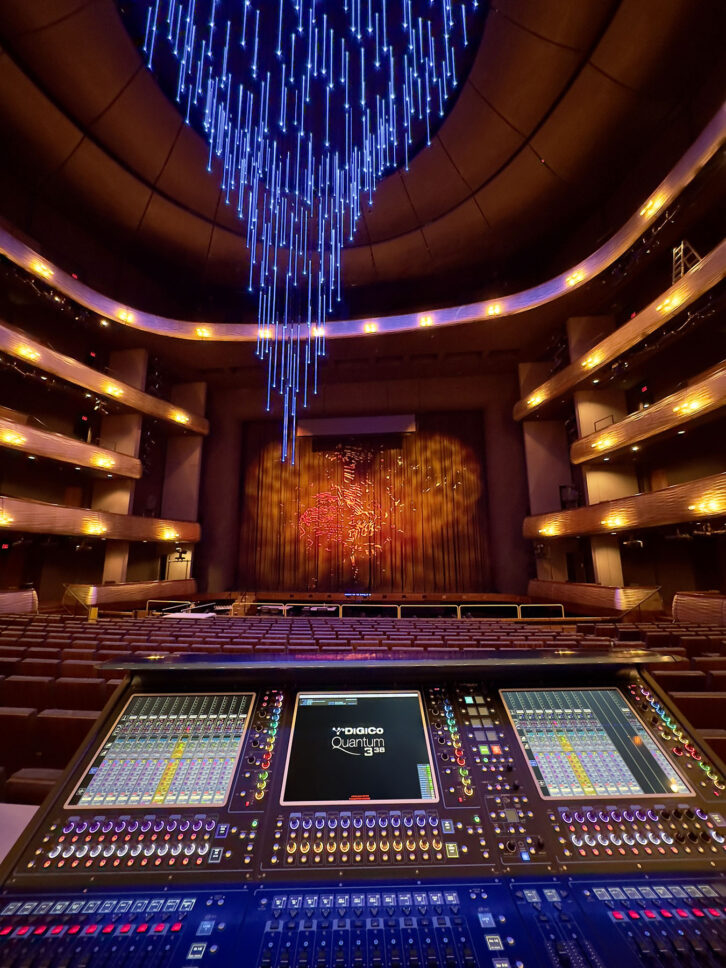
The new systems, including a new d&b audiotechnik PA, were designed mainly for use in the Margaret McDermott Hall, located within the Winspear Opera House, and home to The Dallas Opera and Texas Ballet Theater; however, all of the DiGiCo systems will be available for use in any of the venues as needed. Those systems include two Quantum338 consoles, a compact SD11 desk, a 4REA4 processing engine, a Purple Box CAT5/MADI to optical converter, four SD-MiNi Racks, two SD-Nano Racks, and a pair of SD-Racks fully outfitted with 32-bit Stadius Mic/Line cards. DMI-Dante cards were also specified for the consoles, in addition to Optocore connectivity, as well as a dual-redundant Dante IT network that was implemented to connect the system drivelines to drive the new PA.
“The DiGiCo systems are mainly for the opera house but can be moved and used around the entire AT&T Performing Arts Center as needed,” says Jace Hershberger, Head Audio for the AT&T Performing Arts Center. “Flexibility was the main feature we looked for.” In addition to ballet and opera, the Center presents a range of programming in the Winspear Opera House, including touring Broadway productions, comedy, modern dance, and concerts. Keb’Mo’ and Boz Scaggs were among this summer’s headliners.
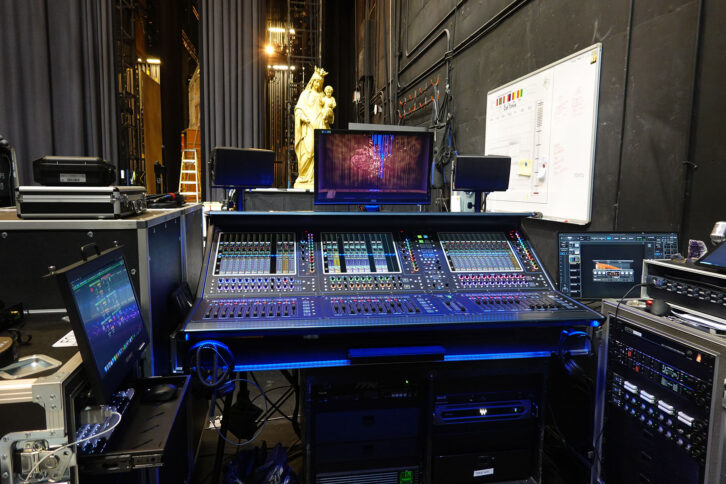
Ken DeBelius, System Integration Sales Manager at Nashville’s Spectrum Sound, the designer-integrator that handled the entire facility’s audio upgrade, amplified that: “The Quantum338 consoles and SD11 desk, along with the stage racks, are basically set up as portable floater consoles to do either FOH or monitor applications wherever is needed between the three venues. The two Quantum338 and the stage racks are completely portable and able to be used freely in any of the three main venues. The 4REA4 is permanently installed in the amplifier rack and is doing processing/routing for the system drivelines in the Winspear. Also, they expect use the SD11 for simple events in their smaller spaces, such as the Wyly Studio Theatre.”
DeBelius says that Spectrum had worked with the AT&T Performing Arts Center over the last eight years to upgrade several of their portable audio systems, as well as implement a new house loudspeaker system for the Wyly black box theater. “This latest project was quite a long-overdue major renovation for the audio system in the Winspear,” he explains. “It was basically ground-up, including a new fiberoptic infrastructure to support the DiGiCo Optocore transport network. The new complement of DiGiCo worksurfaces and other hardware will allow them the needed flexibility to meet the varied demands of all types of shows that come through the performing arts center.”
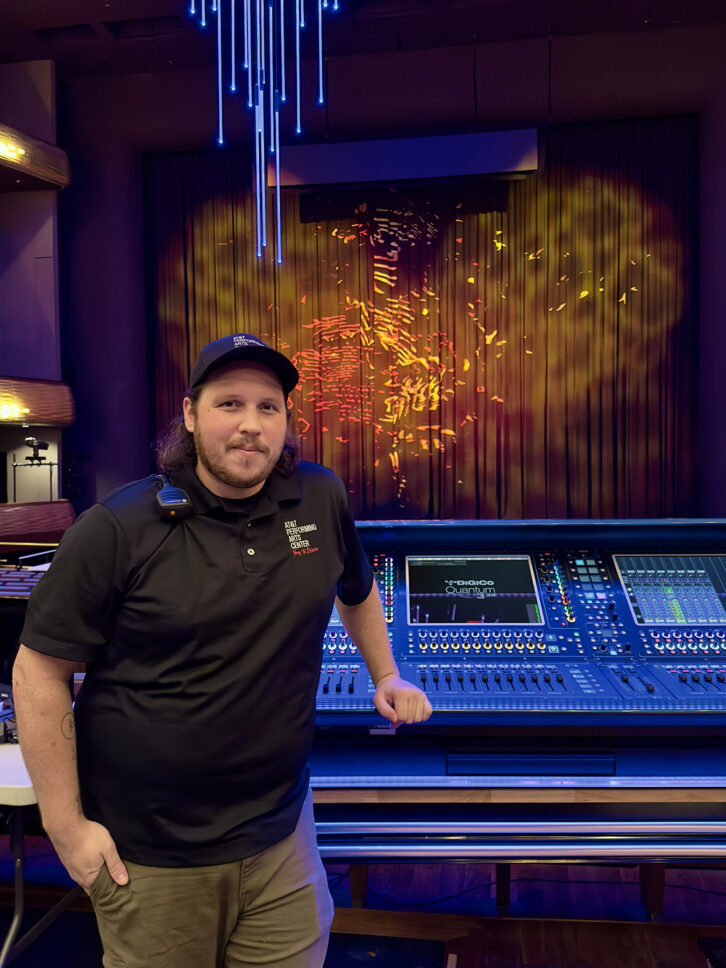
Hershberger says that DiGiCo’s broad acceptance in the touring and installed-sound markets was a major factor in the decision-making process and, as an engineer familiar with the consoles, he’s a fan of their sound quality and operation. But flexibility—the capability to address the needs of a wide variety of venues under one roof—was the key criterion.
“That really great flexibility combined with DiGiCo’s sonic capabilities and its broad contract-rider acceptability made it the obvious choice,” he says. On a more granular level, he cites processing such as the Quantum’s Spice Rack as further reason to make DiGiCo the hub of the venues’ audio.
“The Spice Rack is definitely helpful for processing for our mains, such as compression and multi-buss EQ, he says. “We’re not dependent on any third-party or outboard processing for that.” Hershberger also points out that among the AT&T Performing Arts Center’s audio staff, he is specifically assigned to the Winspear, so he’ll sometimes tap additional expertise through IATSE local 127. DiGiCo consoles’ ubiquity becomes a plus in that regard, as well, with many freelancers also familiar with the desks.
But the bottom line is flexibility. “Control-wise, the consoles and systems let us basically do whatever we want, and put anything anywhere,” he says. “The consoles’ layers are completely customizable and really work well for no matter what we’re doing, from just a single presenter to a full band. And we have an entire file base of snapshots of all of the possible configurations for any console in any location ready to go. The 4REA4 allows us to accept analog signals, AES signals, or Dante into the system to drive the PA, so whenever we have a tour come through, I’ve got AES at both the mix positions, or we can patch in analog using our tie lines that are installed from basically any point within the venue.”
The wide array of DiGiCo racks also contributes to that flexibility. “Our setup is constantly changing—we don’t have a standard operation—so, for instance, if we’re putting two stage racks down in the orchestra pit to mic a full orchestra, we can also drop a couple of MiNis somewhere on stage to pull in those mics there and not have to run a bunch of analog cable everywhere,” he explains. “And the Purple Box is our ‘in-between’ mainly for when we have a recording come in—we’ll give them a MADI feed, and depending on whatever kind of MADI device they have, they can either take optical, Ethernet or SDI MADI.
“Basically,” he continues, “anything that comes in, we can make it work any way we want. We’ve got an enormous amount of flexibility that lets us configure this system however we need to on a day-to-day basis. We’ve been extremely happy with how everything operates and integrates. It’s been fantastic having these consoles here and the ability to have shows come in without their consoles and be able to load their files and work well within our systems.”
For more information on the AT&T Performing Arts Center, visit www.attpac.org. Spectrum Sound can be found online at www.spectrumsound.net.



